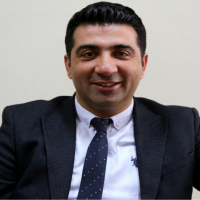Research Article
Aim & Scope
Journal of Advanced Education Studies is online, open-access, free of charge, refereed and international journal which publishes qualified scientific studies on current issues in the field of educational sciences. In this context, the aim of our journal is to create a rich digital sharing and learning environment in the international dimension, which contributes to theoretical and practical aspects of education.
Journal of Advanced Education Studies publishes qualitative, quantitative or mixed-method studies which are qualified and original about all fields of education,
It is important that the studies to be accepted in the journal should contribute to the field of educational sciences and include new approaches and models .
Articles focusing on one of the following areas are welcomed by the journal;
o Curriculum and Instruction
o Educational Sociology, Philosophy of Education, History of Education
o Educational Administration
o Educational Measurement and Evaluation
o Guidance and Psychological Counseling
o Curriculum, Learning and Teaching in Higher Education
o Education-Training Studies in the Context of Quality in Higher Education
o Teacher Education
o Lifelong Learning
o Lifewide Learning
o Computer and Instructional Technology Education
o Adult Education
o Special Education
o Biology Education
o Environmental Education
o Geography Education
o Religious Culture and Moral Knowledge Education
o Philosophy Education
o Science Education
o Physics Education
o Fine Arts Education
o Chemistry Education
o Mathematics Education
o Physical Training and Sports Education
o Vocational and Technical Education
o Museum Education
o Music Education
o Preschool Education
o Health Education
o Art and Design Education
o Social Sciences Education
o History Education
o Technology and Design Education
o Turkish Language and Literature Education
o Turkish Education
o Distance Education and E-Learning
o Foreign Languages Education and similar studies
Author Guidelines
Peer Review Process
Once your paper has been assessed for suitability by the editor, it will then be peer-reviewed by independent, two or three expert referees. Publication decision for submitted manuscripts is based on peer review process. But the editor is responsible for the final decision regarding acceptance or rejection of articles. The journal makes articles available online as soon as possible after acceptance. Author(s) is responsible for their articles’ conformity to scientific and legal rules.
The works to be submitted should not have been published elsewhere or have been under consideration for publication elsewhere (except in the form of an abstract, an academic thesis, or poster presentation). However, this situation should be noted as a footnote by the author(s) on the title page.
Copyright
If the manuscript is accepted for publication, the authors will be informed via e-mail. The author(s) will not be paid any copyright.
New Submissions
Submission to this journal proceeds online and you will be guided stepwise through the creation and uploading of your files. Manuscripts should be prepared by Word “doc, docx” format.
Title Page
The title page should include a concise and informative title (Turkish and English), the name(s), academic title(s) and complete affiliation(s) of the author(s), and the information of corresponding author including name, e-mail address, telephone, and fax numbers. All authors are recommended to provide an open researcher and contributor ID (ORCID) (http://orcid.org). Information about the identity of the name and organization should not be given on any page other than the title page. The Turkish and English title of the article should be written in capital letters, using font size 12 and bold and it should be set centered. First letter of the author(s) name and last name should be written in capital letter with font size 11 and aligned to the left. The affiliations(s) and contact information of the author(s) should be written with font size 10 in the footnote.
Emphasis
In the text, bold words cannot be used. If you want to emphasize, it should be written in font size 9 and italics should be employed.
Footnotes
Footnotes should only be used for explanation and numbered at the end of the page. The number should be used when adding footnotes.
Sorting Bullets
Bullets (•) instead of (1, 2, 3) numbers should be preferred when sorting in the text.
Appendices
Other elements such as survey form, data set, and statistical analysis etc. can be given in appendices part. If there is more than one additional material, they should be numbered for each addition. Appendices should be given at the end of the references on a separate page.
Direct Citations
Direct citations should be typed in quotation marks “ ” with font size 9.
- If citation is used at the end of the sentence, last name of the author and the publication year is given in parentheses
(Yanpar, 2001)
(Uygur & Yanpar, 2019)
(Uygur et al., 2009); (Uygur and Yanpar, 2002)
-If citation is used in the beginning or middle of the sentence using the name of the author, the publication year is given in parentheses.
According to the research by Yanpar & Uygur (2014) ………..
Yanpar et al. (2001) stated……….
-When it is required to cite more than one work at the same sentence, sources are specified within parenthesis by ordering author names alphabetically separated with semicolons.
(Kılıç, 2002; Yanpar, 1983)
(Mutlu, 1999; Shafranske & Mahoney, 1998; Smith et al., 2003)
-When direct citations are used, page numbers should be specified.
As Yanpar (2018, p. 39) pointed out “……………..”
..... exploring learners’ beliefs and perceptions was investigated (Efendioğlu, 2017, pp. 34-35).
When authors have the same last name, first names should be used alphabetically and separated with semicolons.
(E. Johnson, 2001; L. Johnson, 1998)
-Institutional Sources
The Ministry of Interior (2000) explained census ..........
..........the number of Syrian students increased (The Ministry of Education, 2018, p. 34).
As stated in the Corporate Assessment Guideline (2017) ……….
.......... (Ministry of Family and Social Policy [MFSP], 2012, p. 6)
References
The list of references should be given at the end of the article and prepared in accordance with the standards of APA 6th Edition. Please ensure that every reference cited in the text is also present in the reference list (and vice versa). In case of having cited an author’s different studies of the same year, letters 'a', 'b', 'c', are added to the date. Use of DOI is recommended. Reference list should be alphabetized by the last names of the authors of each study. All references should be written in font size 11. Some examples are given below:
-Journal articles
Last name of the author, the initial letter(s) of the name. (Publication Year). Article name. Name of the journal, volume number (issue number), page (s). http://doi.org/xx.xxx/yyyyy
Yelken, T. (2009). The effects of materials development based on "creativity activities within a group" on teacher candidates' portfolios. Egitim ve Bilim-Education And Science, 34(153), 83-98.
Berndt, T. J. (1981a). Age changes and changes over time in prosocial intentions and behavior between friends. Developmental Psychology, 17(2), 408-416.
Uygur, M., Yelken, T. Y., & Akay, C. (2018). Analyzing the views of pre-service teachers on the use of augmented reality applications in education. European Journal of Educational Research, 7(4), 849-860. doi: 10.12973/eu-jer.7.4.849.
-Book
Last name of the author, the initial letter(s) of the name. (Publication Year). Book Name. Place of publication: Publisher
Yanpar, T. (2005). Öğretim teknolojileri ve materyal tasarımı. Ankara: Anı Yayıncılık.
- Edited book
Last name of the editor, the initial letter(s) of the name. (Ed.) (Publication Year). Book Name. Place of publication: Publisher
Last name of the author, the initial letter(s) of the name. (Publication Year). Book Name. The initial letter of the editor’s name. Last name of the editor (Ed.). Place of publication: Publisher
Yelken, T. (Ed.). (2015). Öğretim ilke ve yöntemleri. Ankara: Anı Yayıncılık.
Duncan, G. J., & Brooks-Gunn, J. (Eds.). (1997). Consequences of growing up poor. New York, NY: Russell Sage Foundation.
-Translated book
Last name of the author, the initial letter(s) of the name. (Publication Year). Book Name. (The initial letter of the translator’s name. Last name of the translator, Trans.) Place of publication: Publisher
Creswell, W. (2017). A concise ıntroduction to mixed methods research. (Mustafa Sözbilir, Trans.). Ankara: Pegem Academy.
-Article or chapter in an edited book
Last name of the author, the initial letter(s) of the name. (Publication Year). Title of chapter. Title of book (pages of the chapter). Place of publication: Publisher
Yelken, T (2017). Eğitimin teknolojik temelleri. Eğitim bilimine giriş (pp. 165-184). Ankara: Anı Yayıncılık.
- Electronic sources
Last name of the author, the initial letter(s) of the name. (Publication Year). Title of article. Retrieved from http://www.someaddress.com/full/url/
Petersen, J.C. (1999). Internationalizing quality assurance in higher education. USA: Council for Higher Education Accreditation. Retrieved from http://www.chea.org/pdf/IntlQualityPetersen_June1999.pdf .
- Conference proceeding
Last name of the author, the initial letter(s) of the name. (Year, Month date). Title of paper. Title of Published Proceedings. Title of Conference, Location (inclusive page numbers). Place of publication: Publisher.
Last name of the author, the initial letter(s) of the name. (Year, Month date). Title of paper. Title of Conference, Location. doi:10.XXX/XXXXX.XX
Last name of the editor, the initial letter(s) of the name. (Eds.) (Year). Title of conference, Location, Date. Place of publication: Publisher.
Uygur, M., Akay, C., & Yelken, T. (2018, 13-15 Eylül). Yükseköğretim sisteminde dijital dönüşümün adımları: mobil öğrenmeye hazır mıyız? I. Uluslararası Eğitimde ve Kültürde Akademik Çalışmalar Sempozyumu Tam Metin Bildiri Kitabı. I. Uluslararası Eğitimde ve Kültürde Akademik Çalışmalar Sempozyumu, Türkiye, Mersin (s.18-25).
Balakrishnan, R. (2006, 25-26 March). Why aren't we using 3d user interfaces, and will we ever? Paper presented at the IEEE Symposium on 3D User Interfaces. doi:10.1109/VR.2006.148.
Wilkinson, R. (1999). Sociology as a marketing feast. In M. Collis, L. Munro, & S. Russell (Eds.), Sociology for the New Millennium. Papers presented at The Australian Sociological Association, held at Monash University, Melbourne, 7-10 December (pp. 281-289). Churchill, Victoria: Celts.
-Newspaper article
Last name of the author, the initial letter(s) of the name. (Year, Month Day). Title of article. Title of Newspaper. Retrieved from http://www.someaddress.com/full/url/
Shepherd
J. (2009, February 10). Fertile minds need feding. The Guardian.
Retrieved from https://www.theguardian.com/education/2009/feb/10/teaching-sats
-Published dissertation
Last name of the author, the initial letter(s) of the name. (Year). Title of dissertation (Doctoral dissertation). Retrieved from Name of database. (Accession or Order Number)
Biswas, S. (2008). A neuroprotective treatment target in Parkinson's disease. Retrieved from ProQuest Digital Dissertations. (W200008)
- Unpublished dissertation
Last name of the author, the initial letter(s) of the name. (Year). Title of dissertation (Unpublished doctoral dissertation). Name of Institution, Location.
Uygur, M. (2018). Yükseköğretimde kalite güvencesi bağlamında öğretme-öğrenme süreçlerinin incelenmesi ve öğretim elemanlarına yönelik bir eğitici eğitimi programı geliştirilmesi (Yayımlanmamış doktora tezi). Mersin Üniversitesi, Türkiye.
- Institution
Karadeniz Technical University. (2015). Collaboration between institutional university and industry in Karadeniz Technical University (Publication No. 235). Trabzon, Turkey. Karadeniz Technical University Publications.
- Data set
Ministry of Internal Affairs General Directorate of Immigration Administration. (2018). Immigration Statistics [Data File]. Retrieved from http://www.goc.gov.tr/icerik6/giris-cikis_363_378_4708_icerik
- Powerpoint
Yelken, T. (2015). Bologna process applications [PowerPoint slides]. Retrieved from https://slideplayer.biz.tr/slide/3115189
Ethical Principles and Publication Policy
For all parties involved in the act of publishing (the author, the editor(s), the peer reviewer and the publisher) it is necessary to agree upon standards of expected ethical behavior. The ethics statements for our journal are based on the Committee on Publication Ethics (COPE) Best Practice Guidelines for Journal Editors.
1. Duties of the Editors-in-Chief
Fair play
Submitted manuscripts are evaluated for their intellectual content without regard to race, gender, sexual orientation, religious belief, ethnic origin, citizenship, or political philosophy of the authors.
Confidentiality
The Editor-in-Chief and any editorial staff must not disclose any information about a submitted manuscript to anyone other than the corresponding author, reviewers, potential reviewers, other editorial advisers, and the publisher, as appropriate.
Disclosure and conflicts of interest
Unpublished materials disclosed in a submitted manuscript must not be used in an Editor's own research without the explicit written consent of the author(s).
Publication decisions
The handling Editor-in-Chief of the journal is responsible for deciding which of the submitted articles should be published. The Editor-in-Chief may be guided by the policies of the journal's Editorial Board and constrained by such legal requirements as shall then be in force regarding libel, copyright infringement and plagiarism. The Editor-in-Chief may confer with other editors or reviewers in making this decision.
2. Duties of Peer Reviewers
Contribution to editorial decisions
Peer review assists the Editor-in-Chief in making editorial decisions and, through the editorial communication with the author, may also assist the author in improving the manuscript.
Promptness
Any invited referee who feels unqualified to review the research reported in a manuscript or knows that its timely review will be impossible should immediately notify the Editor-in-Chief so that alternative reviewers can be contacted.
Confidentiality
Any manuscripts received for review must be treated as confidential documents. They must not be shown to or discussed with others except if authorized by the Editor-in-Chief.
Standards of objectivity
Reviews should be conducted objectively. Personal criticism of the author is inacceptable. Referees should express their views clearly with appropriate supporting arguments.
Acknowledgment of sources
Reviewers should identify relevant published work that has not been cited by the authors. Any statement that an observation, derivation, or argument had been previously reported should be accompanied by the relevant citation. A reviewer should also call to the Editor's attention any substantial similarity or overlap between the manuscript under consideration and any other published data of which they have personal knowledge.
Disclosure and conflict of interest
Privileged information or ideas obtained through peer review must be kept confidential and not used for personal advantage. Reviewers should not consider evaluating manuscripts in which they have conflicts of interest resulting from competitive, collaborative, or other relationships or connections with any of the authors, companies, or institutions connected to the submission.
3. Duties of Authors
Reporting standards
Authors reporting results of original research should present an accurate account of the work performed as well as an objective discussion of its significance. Underlying data should be represented accurately in the manuscript. A paper should contain sufficient detail and references to permit others to replicate the work. Fraudulent or knowingly inaccurate statements constitute unethical behavior and are unacceptable.
Originality and Plagiarism
The authors should ensure that they have written entirely original works, and if the authors have used the work and/or words of others that this has been appropriately cited or quoted.
Multiple, redundant or concurrent publication
An author should not in general publish manuscripts describing essentially the same research in more than one journal or primary publication. Parallel submission of the same manuscript to more than one journal constitutes unethical publishing behavior and is unacceptable.
Acknowledgment of sources
Proper acknowledgment of the work of others must always be given. Authors should also cite publications that have been influential in determining the nature of the reported work.
Authorship of a manuscript
Authorship should be limited to those who have made a significant contribution to the conception, design, execution, or interpretation of the reported study. All those who have made significant contributions should be listed as coauthors. Where there are others who have participated in certain substantive aspects of the research project, they should be named in an Acknowledgement section.
The corresponding author
The corresponding author should ensure that all appropriate co-authors (according to the above definition) and no inappropriate co-authors are included in the author list of the manuscript, and that all co-authors have seen and approved the final version of the paper and have agreed to its submission for publication.
Hazards and human or animal subjects
If the work involves chemicals, procedures or equipment that have any unusual hazards inherent in their use, the authors must clearly identify these in the manuscript.
Disclosure and conflicts of interest
All authors should disclose in their manuscript any financial or other substantive conflict of interest that might be construed to influence the results or their interpretation in the manuscript. All sources of financial support for the project should be disclosed.
Fundamental errors in published works
When an author discovers a significant error or inaccuracy in his/her own published work, it is the author’s obligation to promptly notify the journal’s Editor-in-Chief or publisher and cooperate with them to either retract the paper or to publish an appropriate erratum.
4. Publisher’s Confirmation
In cases of alleged or proven scientific misconduct, fraudulent publication or plagiarism the publisher, in close collaboration with the Editors-in-Chief, will take all appropriate measures to clarify the situation and to amend the article in question. This includes the prompt publication of an erratum or, in the most severe cases, the complete retraction of the affected work.
The Publisher and the Journal do not discriminate on the basis of age, color, religion, creed, disability, marital status, veteran status, national origin, race, gender, genetic predisposition or carrier status, or sexual orientation in its publishing programs, services and activities.
Price Policy
Yazarlardan makaleleri yayımlamak için herhangi bir ücret talep edilmemektedir.
Indexes
Other Indexes
Journal Boards
Auto-generated board - Please Edit This Title


Email: acalik@mehmetakif.edu.tr
Editorial Board
Ordinaryus Prof. Dr. Şenel Poyrazlı, Hacettepe Üniversitesi'nde 1992 yılında Psikolojik Danışma ve Rehberlik dalında lisans eğitimini tamamlamıştır. Kısa bir süreliğine rehber öğretmen olarak çalışmış ve hemen ardından Amerika Birleşik Devletleri'ne yüksek lisans eğitimine devam etmek için gitmiştir. 1997 yılında Northeastern Üniversitesi-Boston'dan Danışma Psikolojisi alanında mastır eğitimini, 2001 yılında ise Houston Üniversitesi'nden yine Danışma Psikolojisi alanında doktorasını tamamlamıştır. Yüksek lisans ve doktora eğitimi sırasında bir çok hastane, klinik ve üniversite psikolojik danışma merkezlerinde danışman olarak görev yapmıştır.
Son 24 yıldır Pennsylvania Eyalet Üniversitesi'nin Harrisburg kampüsünde (Penn State Harrisburg) çalışmaktadır. Sekiz yil boyunca bölüm başkanlığı yapmıştır. Öğrettiği dersler arasında kültürlerarası yeterlilik, kültürel psikoloji, danışma teknikleri, grup psikolojik danışma gibi dersler yer almaktadır. Araştırma konusu üniversite oğrencilerinin akademik ve kültürel deneyimleri, göçmenlerin kültürel deneyimleri ve kültürel yeterlilik eğitimi alanlarındadir. Yaptığı araştırmalar bir çok uluslararası dergide yayınlanmıştır. Anı Yayıncılık tarafından basılan psikolojik danismanlar ve terapistler icin kulturel yeterlik konulu kitabin es-editoru ve yazaridir. Ayrica da Amerika'da Sage Yayınevi (Sage Publications) tarafından basılan "Ruh sagliginda global vakalar" adlı kitabın hem yazarı hem de eş editörüdür.
Amerikan Psikologlar Birliği (APA) içinde 2000 yılından beri aktif bir şekilde görev almaktadır. APA Uluslararası Psikoloji’ye 2014 yılı için başkan seçilmiştir. Uluslararası Psikoloji'nin resmi yayını International Psychology Bulletin'a editorlük, APA Genel Psikoloji bölümünün yayını The General Psychologist'e de yardımcı editörlük yapmıştır. Ayrıca Eğitim Araştırmaları Dergisi'ne (Eurasian Journal of Educational Research) eş-editörlük, International Perspectives in Psychology dergisine de danışman editörlük (consulting editor) yapmistır.
Kariyeri boyunca bir çok ödül almıştır. Bunların arasında APA Uluslararasi Psikoloji'ye olağanüstü hizmet (2006 ve 2007 yılları) ve en iyi editor ödülü (2010) yer almaktadir. Pennsylvania Eyalet Universitesi, Harrisburg kampüsünde de 2007 yılında en iyi öğretmen ödülüne, 2010 yılında da kültürel farklılığa saygı alanında yaptığı katkılarından dolayı başka bir ödüle (Diversity Award) layık görülmüştür. Yine kendi kampusunde, 2021’de en iyi arastirmaci odulune, 2025 yilinda da rektorun ustun basari odulune layik gorulmustur. Makalelerine 6.000’in ustunde atif yapilmistir.
Sayin Poyrazli’nin odulleri arasinda APA tarafindan verilen mukemmel uluslararasi psikolog (2021) ve danisma psikolojisi ustun katki odulu de (2021) yer almaktadir.
Sayin Poyrazli 2022-2023 akademik yilinda Fulbright bursuyla Turkiye’ye gelmis ve Bilkent Universitesinde bir yil gorev yapmistir. Turkiye’de yer alan Uluslararasi Avrasya Egitim Arastirmalari (EJER) kongresine 3 yol boyunca baskanlik yapmistir.
Butun bunlarin yani sira, Turkiye’deki bir cok ogrenciye ve genc akademisyene mentorluk yapmaktadir.




Dr. Gürol YOKUŞ graduated from Boğaziçi University, Faculty of Education, Department of Foreign Languages Education (2011). He received her master's degree from Mersin University, Department of Curriculum and Instruction (2015) and his PhD degree from Mersin University, Department of Curriculum and Instruction (2018). He started his academic life as a research assistant at Mersin University (2013) and continued his academic life at Sinop University (2018). He received his associate professorship title in the Department of Curriculum and Instruction (2021). He is currently working at Sinop University Faculty of Education. Her main research interests cover various aspects such as curriculum development, instructional design, teacher education, hybrid learning, school leadership, higher education studies. He focuses on developing students' higher order thinking and strives to provide original solutions to problems in curriculum and instruction based on theory and research. He is the author or co-author of more than 50 articles in international refereed journals, many international book chapter publications, and more than 30 papers presented at national and international symposia. He has given many invited talks within the faculty and at workshops.




Website Manager of The Journal of Advanced Education Studies

591201 - POST-SHOOTING ACTIVITIES FOR MOVIE FILMS, VIDEO AND TELEVISION PROGRAMS (AUDIO-VISUAL EDITING, TRANSFER OF MASTER COPIES, COLOR CORRECTION, DIGITAL ENHANCEMENT, VISUAL EFFECTS, ANIMATION, SUBTITLES, TITLE, GRAPHICS, ETC. WORKS) Radio, cinema editing, montage is his speciality.
Assistant Editor-in-Chief

Editor-in-Chief
Language Editors










